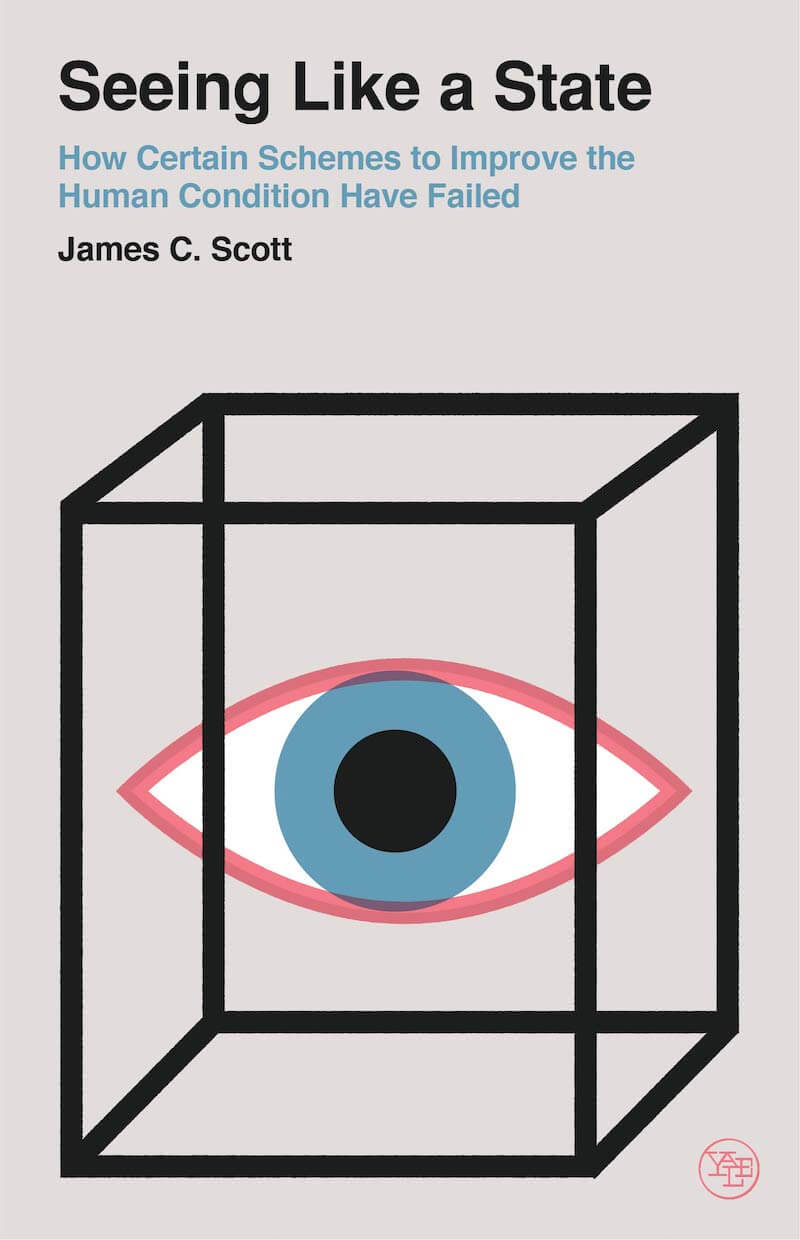Seeing Like a State
by James C. Scott
- Nonfiction
- Shelves: politics, history, economics, philosophy, sociology, anthropology
- 445 pages
- ISBN: 9780300078152 (Goodreads)
- Format: Kindle
- Buy on Amazon

Summary
Seeing Like a State is a deep academic, almost textbook-like, analysis of “high modernism” and its failings to deliver on its promises. Looking to Wikipedia, the movement is defined by a confidence, expectation, and reliance on science, technology, and knowledge to reorder social and natural systems according to “better” intentional design. Scott works from a similar definition of the term, spending significant time trying to diagnose why seemingly well-intentioned movements in history have backfired so spectacularly against their stated goals.

The high modernist government bureaucrat, architect, or social organizer looks at the emergent, chaotic natural world and assumes a problem: look at the inefficiency! Look how ugly and disorganized it all is! In attempt to ground-up redesign emergent systems — cities, horticulture, markets — high modernists think they “know better”, and can make these systems more efficient through intervention. In particular, Scott is interested in authoritarian high modernism, a flavor of the movement that combines the ideas of the likes of Lenin, Le Corbusier, or Robert Moses and combines them with authoritarian power. It’s bad enough to think you know how do design complex societal systems from above, it’s another thing entirely to actually attempt to do it.
Scott uses a diverse set of examples to demonstrate high modernism’s failings. Rural villagization in Tanzania, ground-up city-building in Brasilia and Chandigarh, collective farming in Russia. Each of these begins from a point of positive objectives, but rapidly proceeds to devalue or reject the complexity of the existing system state. Classic examples of the Chesterton Fence. Complex systems are shot through with invisible relationships, complexity, and illegible details. But the ivory tower bureaucrat looks at a byzantine “backward” system of land tenure in Russia and assumes a lack of knowledge or expertise. There are countless examples throughout history of centralized, top-down attempts to reorder societies blowing up in our faces. Yet somehow the high modernist experts continue their attempts to green-field.
The central thesis is that a movement to make things “legible” to outsiders naturally promotes authoritarian behavior. Every move to centralize or make legible a complex system comes with a raft of trade-offs that are often shunted aside or disrespected.
Key Takeaways
- Legibility from the center isn’t all negative; but major trade-offs are being made (whether understood or invisible) when pulling systems, traditions, and decision making up from the local level
- Rules of thumb how to maintain a progressive society without slipping into authoritarian high modernism
- Take small steps
- An experimental approach to social change
- Observe systemic reactions at smaller scale
- Favor reversability
- Make small, editable or reversable mistakes
- Plan on surprises
- A pragmatic, realistic approach would assume occasional failure and respond accordingly, versus being totally captured by a plan’s genius
- In complex systems, adaptation is the way forward
- Plan on human inventiveness
- Do not treat subjects of plan as agency-less pawns, but rather as individual motivated actors that will react to a plan’s implementation
- Take small steps
References
- A Big Little Idea Called Legibility, Venkatesh Rao
- The Efficiency-Destroying Magic of Tidying Up, Flo Crivello